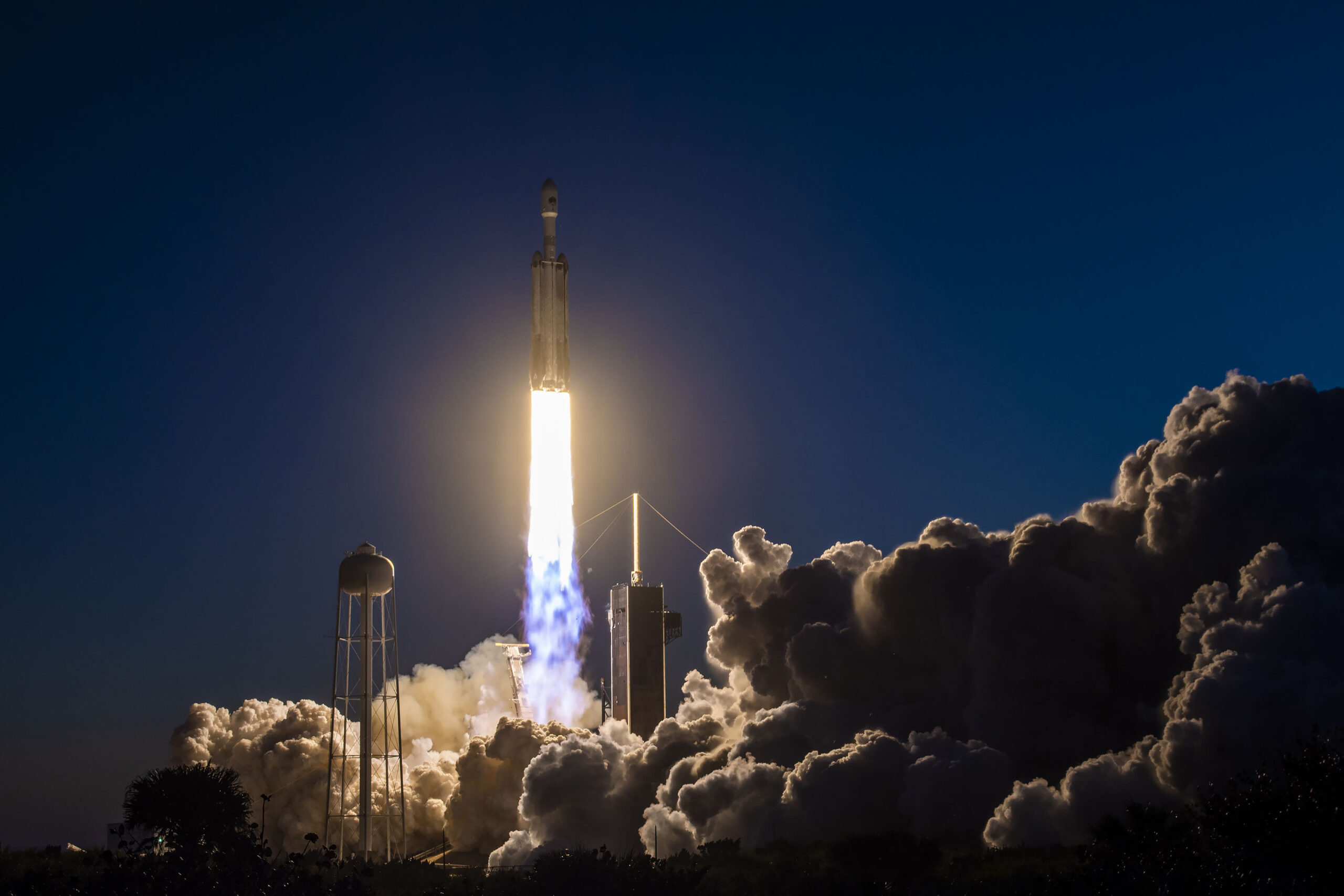SpaceX Launches Falcon Heavy Mission for US Space Force with Boeing and Northrop Grumman Satellites

SpaceX launches a Falcon Heavy mission for the U.S. Space Force on Jan. 15, 2023. Photo: SpaceX
A SpaceX Falcon Heavy rocket lofted the Boeing and Northrop Grumman communications satellites into orbit on Jan. 15 from NASA’s Kennedy Space Center in Florida in the USSF-67 mission for the U.S. Space Force.
The mission launched Boeing’s Continuous Broadcast Augmenting SATCOM (CBAS)-2 satellite and Northrop Grumman’s Long Duration Propulsive ESPA (LDPE)-3A satellite.
The USSF-67 mission was the first by SpaceX under the Space Force’s National Security Space Launch (NSSL) Phase 2 contract, according to the Space Force’s Space Systems Command (SSC).
The first CBAS Geosynchronous Earth Orbit (GEO) satellite launched in 2018. Based on Northrop Grumman’s ESPAStar satellite bus, the LDPE series is to transition to Northrop Grumman’s planned Rapid On-orbit Space Technology Evaluation Ring (ROOSTER) “freight train to space” after LDPE-3. Northrop Grumman said that the ESPAStar has hardware to enable five independent deployments per mission. LDPE-3A is to have a one-year mission life in near GEO, per Northrop Grumman.
Northrop Grumman said that USSF-67 is the third in the LDPE series since December 2021 when LDPE-1 launched aboard the DoD Space Test Program-3 (STP-3) mission. LDPE-2 launched on the USSF-44 mission in November last year.
“A prominent innovation developed by SpaceX and adopted by the U.S. Space Force is booster reusability,” SSC said on Jan. 15. “The side boosters for USSF-67 were the same ones used for USSF-44, which launched from the Eastern Range on Nov. 1, 2022. The efficiencies garnered from reusability benefit all customers, adding flexibility to a dynamic launch queue and cost savings.”
The Department of the Air Force and the National Reconnaissance Office in August 2020 awarded United Launch Alliance (ULA) — a Lockheed Martin/Boeing partnership — a $337 million contract for two classified launches under NSSL Phase 2 and SpaceX a $316 million contract for a classified launch under NSSL Phase 2.
CBAS-2 is “to provide communications relay capabilities in support of our senior leaders and combatant commanders,” SSC said on Jan. 15. “The mission of CBAS-2 is to augment existing military satellite communication capabilities and continuously broadcast military data through space-based satellite relay links.”
LDPE-3A will “rapidly place multiple, diverse payloads into orbit and provide critical data to inform and influence future U.S. Space Force programs,” per SSC. “This LDPE-3A mission includes two SSC payloads: catcher and WASSAT, and three payloads developed by the Space Rapid Capabilities Office (SRCO). The SRCO payloads include two operational prototypes for enhanced situational awareness, and an operational prototype crypto/interface encryption payload providing secure space-to-ground communications capability. The LDPE spacecraft will continue to provide access to space for multiple DoD space Science & Technology (S&T) demonstration experiments.”
This article was first published by Via Satellite sister publication Defense Daily.